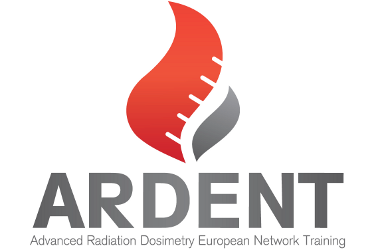ESR 17 - Log Records of my activities throughout the ARDENT training
Activities 2015: Quarter 3-4
Trainings
Hands-on training at the Medical University of Vienna / AKH Vienna
The first step of my project was a dosimetric study of the absorbed dose inside the phantom exposed by photon beams of different configurations. Before the practical part of the work I received a training in how to operate a LINAC and how to work with different types of dosimetry (TLD, Radiochromic film and Ionization Chamber).
MRI in pre-clinical and clinical research for Radiation Oncology: 24-25 September 2015
On 24-25 Sept. 2015 I attended the workshop "MRI in pre-clinical and clinical research for Radiation Oncology" organized by Christian Doppler Laboratory MUW (Vienna). The main focus of the workshop is future oriented and innovative research towards hybrid MR-PET imaging (dose painting, metabolic imaging), MR guided external beam radiotherapy (real-time imaging, treatment adaptation) and MR in pre-clinical research (response assessment, normal tissue effect).
German Language
In the period of 08 Sep - 24 Nov, 2015, I attended a course of German Language every week (A1 level) organized by AIT for non-German speaking employees.
Research and Experimental Activities
CT imaging
To understand the possibility of the phantom to be used in radiotherapy for dosimetry and imaging the first CT investigation was performed. 3D- and 4DCT images have been produced. The results showed an adequate representation of a human thorax and enabled us to plan further research and set up the next steps.
Dosimetric investigation
For this investigation a standard clinical photon beam stereotactic protocol was created based on the CT scans of the phantom. The delivered dose was measured with ionization chambers, films, and TLDs. During the measurements different motion scenarios of the phantom were implemented: static, independent movements of ribs, chest wall, and tumor, and complex sinusoidal motion. The measured result was compared with prescribed dose and impact of every component of the phantom on the delivered dose was analyzed.
2D/3D image registration software verification
A real-time 2D/3D image registration software has been developed at the Medical University of Vienna and can be verified by means of the phantom. The software is supposed to track the tumor motion on-line during radiotherapy. Different image modalities and their combinations, such as ConeBeam-CT (CBCT), kV, onboard MV beam images etc. can be used. Initially the suitability for this investigation to represent a human torso by the phantom was approved by using 4DCT data. The next step will be software approbation by utilizing 3D-printed tumor dummies of different sizes, shapes and consistency.
Further improvements: hardware and software
As the phantom is the first prototype, some possible improvements were specified to make the work with it safer and easier for end-users.
Activities 2015: Quarter 4
Activities 2015: Quarter 3-4
Trainings
Hands-on training at the Medical University of Vienna / AKH Vienna
The first step of my project was a dosimetric study of the absorbed dose inside the phantom exposed by photon beams of different configurations. Before the practical part of the work I received a training in how to operate a LINAC and how to work with different types of dosimetry (TLD, Radiochromic film and Ionization Chamber).
MRI in pre-clinical and clinical research for Radiation Oncology: 24-25 September 2015
On 24-25 Sept. 2015 I attended the workshop "MRI in pre-clinical and clinical research for Radiation Oncology" organized by Christian Doppler Laboratory MUW (Vienna). The main focus of the workshop is future oriented and innovative research towards hybrid MR-PET imaging (dose painting, metabolic imaging), MR guided external beam radiotherapy (real-time imaging, treatment adaptation) and MR in pre-clinical research (response assessment, normal tissue effect).
German Language
In the period of 08 Sep - 24 Nov, 2015, I attended a course of German Language every week (A1 level) organized by AIT for non-German speaking employees.
Research and Experimental Activities
CT imaging
To understand the possibility of the phantom to be used in radiotherapy for dosimetry and imaging the first CT investigation was performed. 3D- and 4DCT images have been produced. The results showed an adequate representation of a human thorax and enabled us to plan further research and set up the next steps.
Dosimetric investigation
For this investigation a standard clinical photon beam stereotactic protocol was created based on the CT scans of the phantom. The delivered dose was measured with ionization chambers, films, and TLDs. During the measurements different motion scenarios of the phantom were implemented: static, independent movements of ribs, chest wall, and tumor, and complex sinusoidal motion. The measured result was compared with prescribed dose and impact of every component of the phantom on the delivered dose was analyzed.
2D/3D image registration software verification
A real-time 2D/3D image registration software has been developed at the Medical University of Vienna and can be verified by means of the phantom. The software is supposed to track the tumor motion on-line during radiotherapy. Different image modalities and their combinations, such as ConeBeam-CT (CBCT), kV, onboard MV beam images etc. can be used. Initially the suitability for this investigation to represent a human torso by the phantom was approved by using 4DCT data. The next step will be software approbation by utilizing 3D-printed tumor dummies of different sizes, shapes and consistency.
Further improvements: hardware and software
As the phantom is the first prototype, some possible improvements were specified to make the work with it safer and easier for end-users.
















